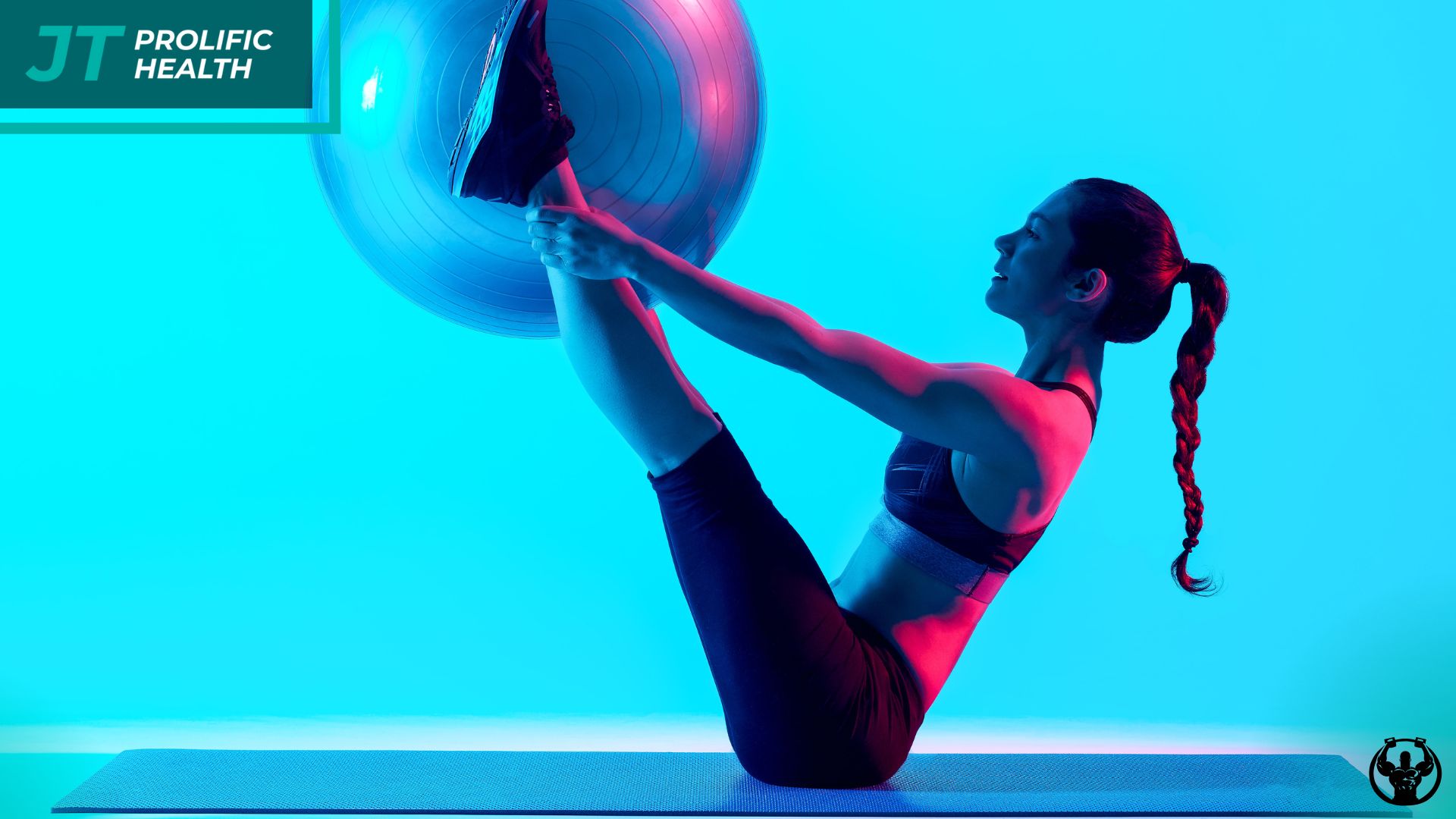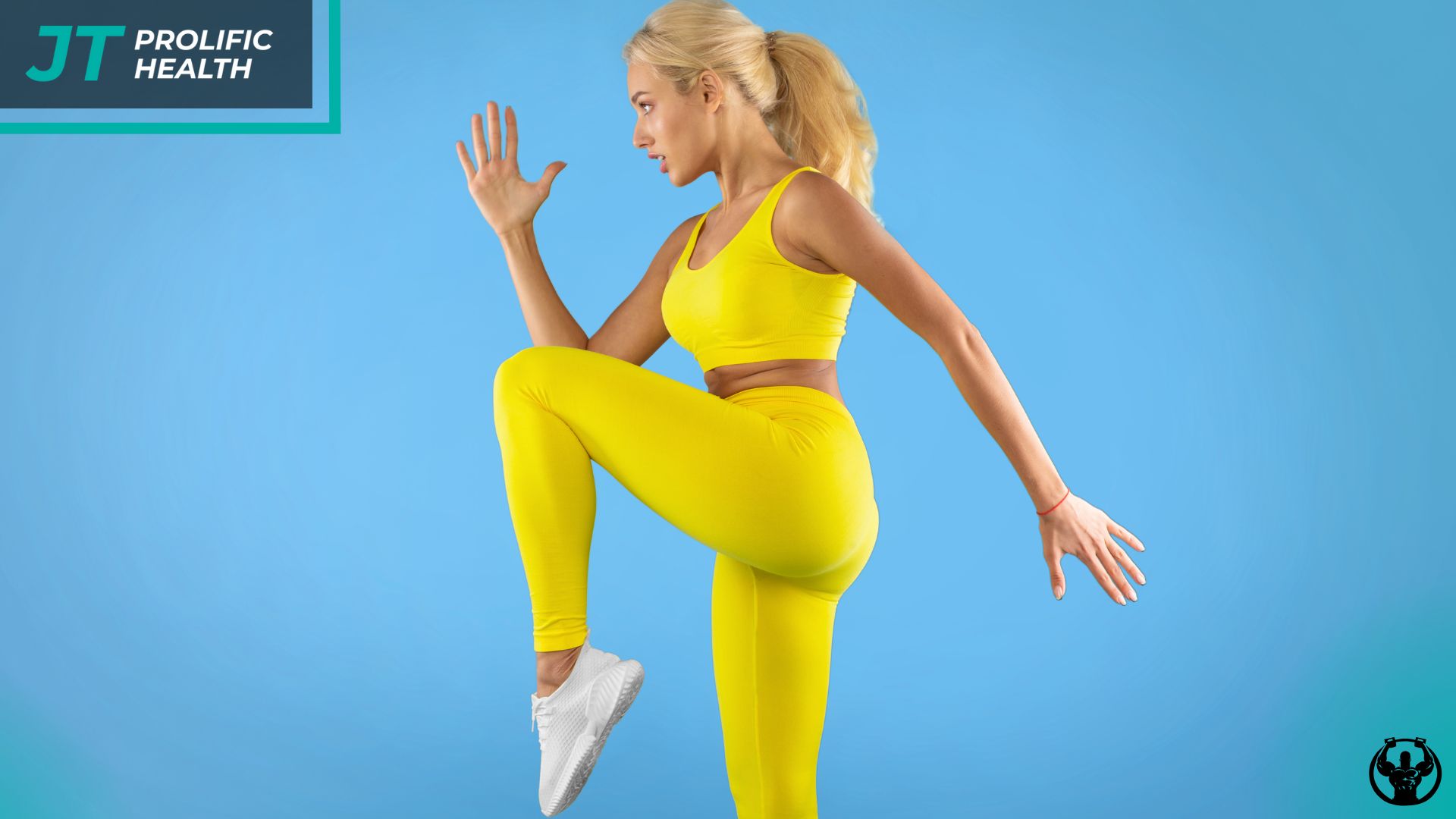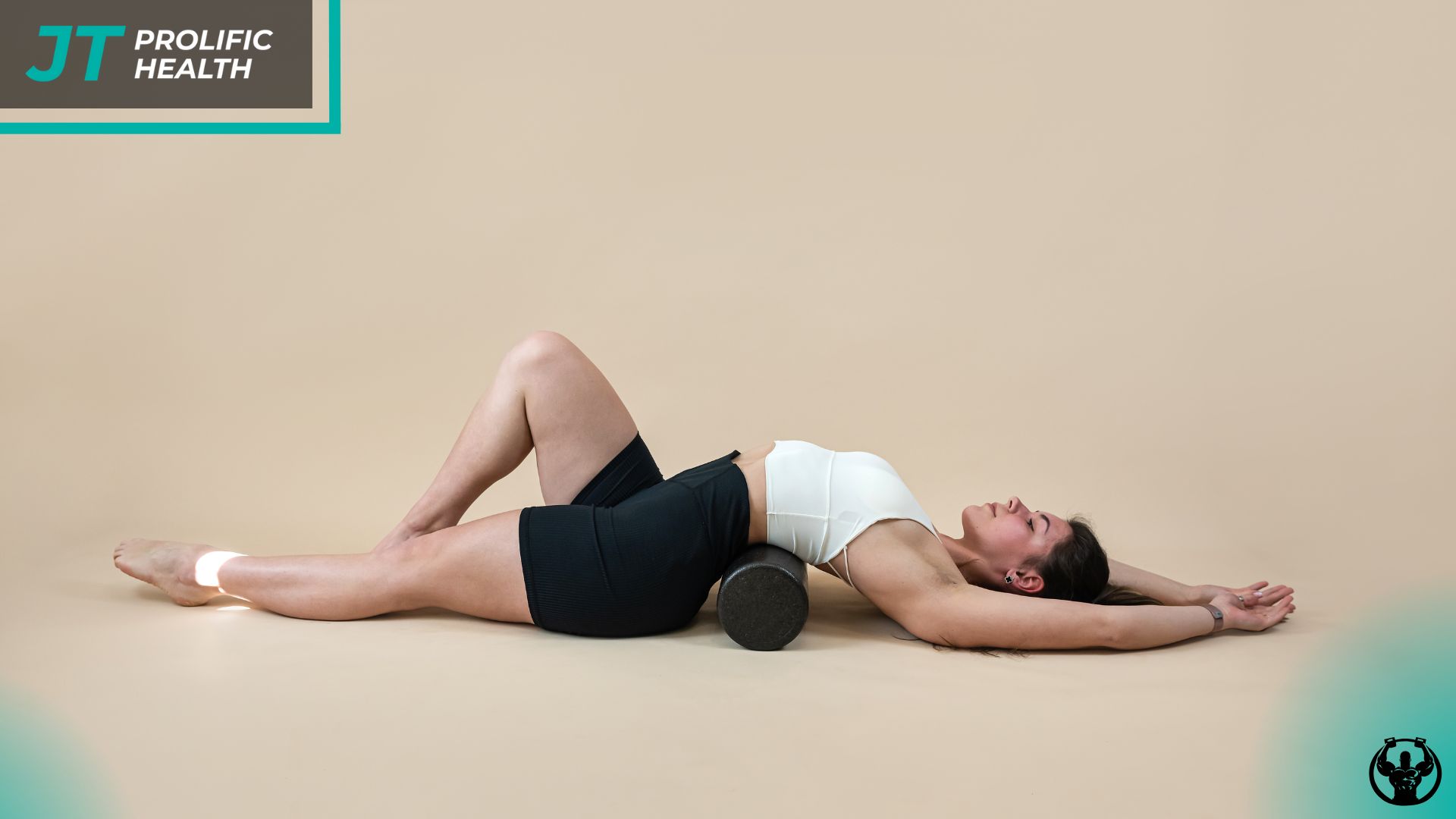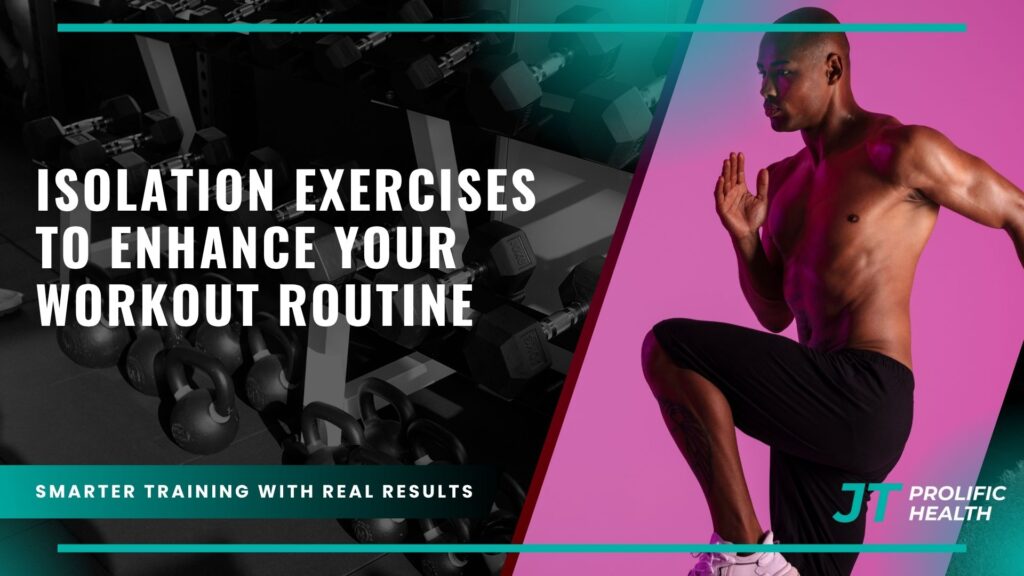Did you know 72% of gym-goers focus solely on full-body movements, missing out on precision muscle development? Single-joint training methods allow you to hone specific areas with surgical accuracy, creating balanced physiques and reducing injury risks.
These focused movements differ from compound lifts by engaging one primary muscle group. Think bicep curls or leg extensions – controlled motions that amplify tension where you need it most. At Prolific Health, our Richmond and Vancouver trainers emphasize this approach for refining weak points.
Science confirms targeted training increases muscle fibre recruitment by up to 19% compared to multi-joint alternatives. This precision helps break through plateaus while complementing your existing routine. Whether you’re rehabbing injuries or chasing peak performance, strategic implementation matters.
Key Takeaways
- Single-joint movements develop specific muscles with precision
- Differentiate between full-body and targeted training approaches
- Science-backed methods improve muscle activation patterns
- Local expertise available across British Columbia fitness centres
- Strategic implementation enhances overall training results
Introduction from Prolific Health
Focused workouts unlock hidden potential in your training. At Prolific Health, we specialize in helping Richmond and Vancouver residents refine their strength through intentional movement patterns. Our approach combines scientific principles with practical application for lasting results.

What Single-Joint Training Achieves
Targeted training methods concentrate effort on specific areas while engaging supporting muscles. During a bicep curl, your triceps stabilize the elbow, and core muscles maintain posture. This collaborative effort enhances control and reduces strain risks.
Our trainers design programs that balance precision work with full-body development. Whether you’re recovering from injury or optimizing performance, single-joint movements create focused tension where needed most. This strategy complements compound lifts for balanced growth.
Your Personalized Fitness Pathway
With locations in Richmond and Vancouver, we tailor programs to your unique needs. Our evidence-based methods prioritize:
- Strategic exercise selection for muscle groups
- Proper form to maximize movement efficiency
- Progress tracking through measurable benchmarks
Call 604 818 6123 to start transforming your body with private training that’s purpose-driven. Let’s build strength that supports your lifestyle and goals.
Understanding the Benefits of Isolation Exercises
For many fitness enthusiasts, building a solid foundation starts with mastering basic movements. Single-joint methods offer distinct advantages when developing specific areas of your physique. These techniques help address individual needs while supporting long-term progress.
Precision in Muscle Engagement
Focused movements allow you to zero in on particular regions with laser accuracy. By directing tension to one primary area, you activate up to 23% more muscle fibres compared to multi-joint activities. This approach helps correct imbalances that often develop from repetitive daily motions or sport-specific patterns.


Streamlined Workout Effectiveness
Beginners particularly benefit from simplified movement patterns requiring less coordination. Key advantages include:
- Lower injury potential due to controlled motion ranges
- Faster mastery of proper lifting mechanics
- Enhanced recovery between intense sessions
These methods build essential strength that translates to better performance in complex lifts. When you strengthen individual components, your body functions more cohesively during demanding activities. Vancouver and Richmond residents often find this strategy helps break through stubborn plateaus.
Isolation Exercises Versus Compound Exercises
Ever wonder why some gym routines deliver better results than others? The secret lies in understanding how different movement patterns serve distinct purposes. Strategic combinations create balanced progress while preventing overtraining.


Distinct Advantages and Unique Benefits
Multi-joint activities like squats engage multiple muscle groups simultaneously. They build functional strength while improving coordination between body parts. This makes them ideal for athletes and those seeking efficiency.
Single-joint methods excel at refining specific areas post-injury or during muscle-building phases. A 2023 study showed combining both approaches increases hypertrophy by 27% compared to using one type exclusively.
Balancing Your Overall Training Regimen
Prioritize compound lifts at your session’s start when energy levels peak. Follow with targeted work to address lagging areas. Effective pairings include:
- Deadlifts followed by hamstring curls
- Bench presses complemented by tricep extensions
- Pull-ups paired with rear delt flyes
Vancouver fitness enthusiasts often use this layered approach. It maximizes strength gains while preventing plateaus. Remember – variety drives adaptation, but structure ensures progress.
Science Behind Effective Isolation Training
What makes certain workouts more effective at building muscle? Research reveals single-joint movements trigger unique physiological responses. These techniques use biomechanical principles to direct force through specific areas, creating measurable changes in strength and size.
How Single-Joint Movements Work
Your body activates muscles through coordinated neural signals. When you perform a focused movement like a tricep pushdown, your nervous system prioritizes the targeted area. Supporting muscles stabilize the joint without stealing tension from the primary group.
Studies show these motions enhance muscle fibre recruitment by 18-22% compared to multi-joint activities. The restricted range of motion allows concentrated stress on desired regions. This stimulates adaptations like increased capillary density and mitochondrial growth within cells.
Three key scientific factors drive results:
- Precise loading patterns reshape muscle architecture
- Neurological pathways become more efficient at firing specific fibres
- Stabilizer muscles improve joint control during complex lifts
Richmond clients often report better mind-muscle connections after incorporating these methods. Vancouver trainers emphasize controlled tempos to maximize tension. By understanding the science, you can strategically shape your physique while reducing injury risks.
Incorporating Isolation Exercises into Your Routine
Struggling to balance compound lifts with focused muscle work? Strategic programming transforms how your body responds to training. Our Richmond and Vancouver clients achieve better results by aligning single-joint movements with their primary workout goals.
Programming Tips for Optimal Results
Schedule targeted movements after multi-joint activities. This preserves energy for heavy lifts while maximizing fatigue management. Research shows this sequence improves strength gains by 11% compared to reversed orders.
Allocate 2-3 sessions weekly for precision work. Use these guidelines:
- 3 sets of 12-15 reps with moderate weight
- 2-second contraction at peak muscle engagement
- 60-second rest between sets
Increase resistance gradually – aim for 5% more weight every 3 weeks. Vancouver trainers emphasize proper position and controlled tempos over maximal loads.
Pairing Isolation with Compound Movements
Combine complementary patterns for amplified effects. Try these proven duos:
- Overhead presses paired with lateral raises
- Barbell rows followed by face pulls
- Squats completed with leg extensions
This layered approach builds functional strength while addressing weak points. Richmond athletes often use time-efficient supersets, alternating between movement types within the same workout block.
Need personalized guidance? Call 604 818 6123 to contact us and schedule your strategy session. Let’s design a routine that aligns with your training objectives.
Top Isolation Exercises to Boost Your Muscle Groups
Want to sculpt specific areas with laser-focused precision? Targeted movements let you zero in on underdeveloped regions while enhancing overall symmetry. Our Richmond and Vancouver trainers recommend these proven techniques for balanced growth across all major zones.
Effective Routines for Arms, Shoulders, and Back
Upper body development starts with controlled motions that maximize tension. For biceps, try hammer curls with palms facing inward – this engages both inner and outer arm fibres. Keep elbows pinned to your sides during concentration curls to prevent shoulder involvement.
Shoulder routines benefit from lateral raises performed with thumbs up. This subtle rotation activates more medial deltoid fibres. Pair these with face pulls using a rope attachment to strengthen rear delts and upper back muscles simultaneously.
- Tricep pushdowns: Maintain straight wrists to focus effort on arm extensors
- Lat pulldowns: Squeeze shoulder blades together at the movement’s bottom
- Cable crossovers: Keep slight elbow bend during chest contractions
Focused Moves for Legs and Core
Lower body development requires movements that isolate key areas without joint strain. Bulgarian split squats challenge balance while targeting quadriceps and glutes. Shift weight to your front heel to emphasize hamstring engagement.
For calves, try single-leg raises off a step platform. Pause at the top contraction for two seconds before lowering slowly. Core work thrives on stability-focused moves like plank variations with alternating leg lifts.
- Leg extensions: Adjust pad position to match your knee alignment
- Hip thrusts: Drive through heels while squeezing glutes at peak
- Romanian deadlifts: Maintain flat back while hinging at hips
Richmond clients often combine these techniques with compound lifts for comprehensive development. Vancouver trainers suggest rotating exercises every 4-6 weeks to prevent adaptation plateaus.
Safety Guidelines and Local Government Recommendations
Local fitness regulations ensure your workout routine meets safety benchmarks while maximizing results. Richmond and Vancouver health authorities emphasize proper equipment use and movement patterns to prevent injuries. These standards help maintain training consistency while protecting your long-term wellness.
Adhering to Fitness Standards in Richmond and Vancouver
Machines offer controlled movement paths but require precise setup. Adjust seat height and pad positions to match your body’s proportions before starting. Vancouver recreation centres mandate weekly equipment inspections to ensure cables and pulleys function smoothly.
Free weights demand extra attention to body alignment. Keep your spine neutral and joints stacked during single-joint movements. Richmond’s municipal guidelines recommend certified trainers supervise new users during initial machine sessions.
Three key safety principles apply:
- Progressively increase weight loads by 5-10% monthly
- Stop immediately if pain occurs beyond muscle fatigue
- Follow facility time limits on popular machines
Local health authorities suggest 48-hour recovery periods between targeted training sessions. This prevents overuse injuries common in repetitive motions. Always consult facility staff if equipment feels unstable or produces unusual sounds.
Expert Advice from Prolific Health on Isolation Training
Small form adjustments create dramatic improvements in targeted training. Our Vancouver and Richmond coaches have refined these techniques through thousands of client sessions. Let’s break down the subtle details that separate good reps from great ones.
Mastering Movement Quality
Begin every rep by establishing your starting position. Align joints properly before lifting – this prevents energy leaks. For example, during bicep curls, position elbows slightly forward to maintain constant tension.
Three essential refinements elevate your technique:
- Squeeze the target muscle at the top for 1-2 seconds
- Slowly lower weights to starting position (3-4 count)
- Exhale during exertion phases, inhale while returning
Visualization strengthens mind-muscle connections. Imagine drawing energy from your fingertips to the working area. Richmond clients who practice this report 31% better activation within weeks.
Common fixes our trainers recommend:
- Reduce weight if you can’t control the eccentric phase
- Use mirrors to check joint alignment mid-movement
- Pause briefly when returning to starting position
These strategies help maintain tension where it matters most. Vancouver athletes combine them with precise breathing patterns for maximum efficiency. Remember – quality repetitions outperform rushed sets every time.
Common Mistakes and Strategies to Avoid Them
Why do some trainees struggle with progress despite consistent effort? The answer often lies in subtle technique errors that undermine workout quality. Let’s explore solutions to frequent issues our Vancouver and Richmond clients encounter.
Resisting the Weight Trap
Heavy loads might impress others but sabotage your form. Excess weight forces other muscles to compensate, reducing tension on your target area. Start lighter to master the movement path before progressing.
Dynamic warm-ups prepare joints better than static stretching. Try arm circles before upper-body work or bodyweight squats prior to leg sessions. This boosts blood flow while practicing proper mechanics.
Movement Precision Matters
Your starting position dictates exercise effectiveness. Align joints as your trainer demonstrated during initial instruction. Check mirror angles if training solo – shoulders should stay level during lateral raises, knees aligned over toes in leg extensions.
Fatigue often breaks form first. When reps get sloppy, reduce weight or end the set. Focus on squeezing the working muscle throughout each phase. Vancouver athletes use tempo control – 2 seconds up, 3 seconds down – to maintain quality.




